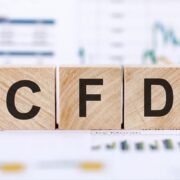Contract for Difference (CFD) trading has become increasingly popular among traders in Singapore. This form of derivative trading allows investors to make price guesses movement of various financial instruments, commodities, indexes, stocks, and currencies, without really possessing the underlying asset. While CFD trading offers the potential for high returns, it also comes with significant risks. Many new traders in Singapore often fall into common pitfalls that can lead to substantial losses. This article will discuss Singapore’s most frequent CFD trading mistakes and how to avoid them.
Table of Contents
Overlooking risk management
One of the most common mistakes traders make when starting with CFD trading is overlooking risk management. CFDs are leveraged products, meaning traders only need to put down a fraction of the total value of the trade to open a position. This leverage can amplify profits, but it can also significantly increase losses. As such, it’s crucial to have a solid risk management plan in place before placing any trades.
One common risk management strategy is setting stop-loss orders. These are predetermined levels at which a trade will automatically close to limit potential losses. Trailing stop-loss orders are another tool available to traders; they modify the stop level when a transaction swings in their favor. Another risk management tool is position sizing, where traders only risk a small percentage of their capital on each trade.
Ignoring risk management can lead to significant losses and wipe out a trader’s account. It’s essential to remember that even the most successful traders experience losses, and risk management is crucial for long-term success in CFD trading.
Trading without a plan
Another frequent mistake made by traders in Singapore is trading without a plan. Many new traders are drawn to the fast-paced nature of CFD trading and may enter trades impulsively without proper analysis and planning. This approach often leads to losses as traders don’t have a clear idea of their entry and exit points or risk management strategy.
Having a trading plan is vital for success in CFD trading. A trading plan should include:
- Rules for entering and exiting trades.
- Risk management guidelines.
- Strategies for different market conditions.
It’s also essential to regularly review and adjust the trading plan as market conditions change. Different CFD trading strategies may be employed for different periods of the year, depending on market changes and economic events.
It’s also crucial to stick to the trading plan and not deviate from it based on emotions or market fluctuations. Trading without a plan is like driving without a map – you may get lucky and reach your destination, but chances are, you’ll end up lost.
Chasing losses
One of the most destructive mistakes traders make is chasing losses. Some traders may become emotional when a trade goes against them and try to recoup their losses by placing more trades without proper analysis. This approach can lead to further losses and a downward spiral of chasing losses.
It’s essential to understand that losses are a part of trading, and it’s impossible to have a 100% success rate. Instead of chasing losses, traders should stick to their risk management plan and accept small losses as part of the trading process. It’s also crucial to cut your losses when necessary, as holding on to losing trades in hopes of a turnaround can result in significant losses.
Traders should also avoid overtrading to make up for losses quickly. Overtrading can lead to poor decision-making and result in more significant losses. It’s essential to have a disciplined approach to trading and stick to your plan, even if it means accepting small losses.
Not diversifying
Another frequent mistake made by traders is not diversifying their portfolios. CFD trading allows investors to trade various financial instruments, and many new traders may focus on one or two markets they are familiar with. However, having a well-diversified portfolio is crucial for managing risk and maximising potential profits.
Diversification involves spreading your investments across different markets, industries, and asset classes. This approach reduces the impact of market volatility on your overall portfolio, as losses in one area may be offset by gains in another.
Traders should also consider diversifying their trading strategies. A mix of short-term and long-term positions can help balance risk and potential returns. Traders should also consider the correlation between different markets and avoid overexposure to highly correlated assets.
Not keeping up with market news and analysis
CFD trading is heavily influenced by market news and analysis, and not staying up-to-date can be a costly mistake for traders. Market events, earnings reports, and economic data can all impact the price movements of financial instruments. Traders who do not keep up with this information may miss potential opportunities or be caught off guard by unexpected market movements.
Traders must have a reliable market news source to analyse and regularly review how these factors may impact their trades. This approach can help traders make more informed decisions and adjust their strategies accordingly.












Comments